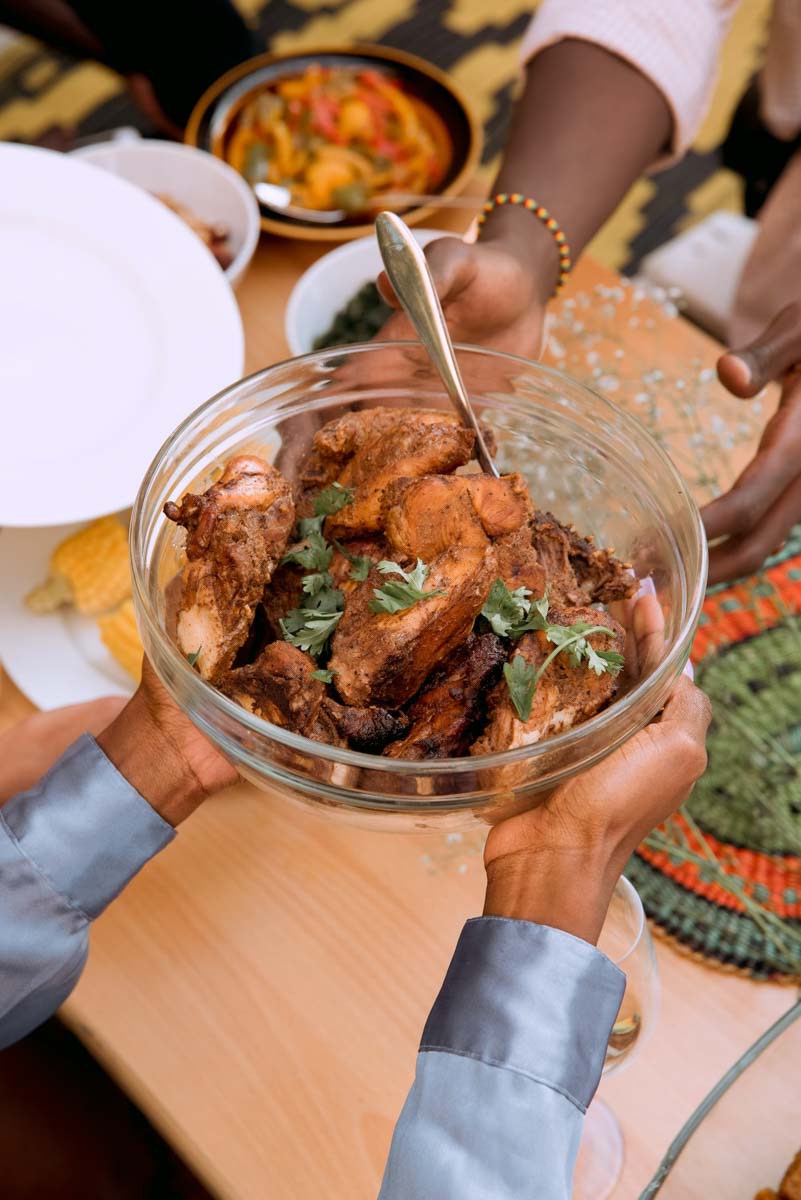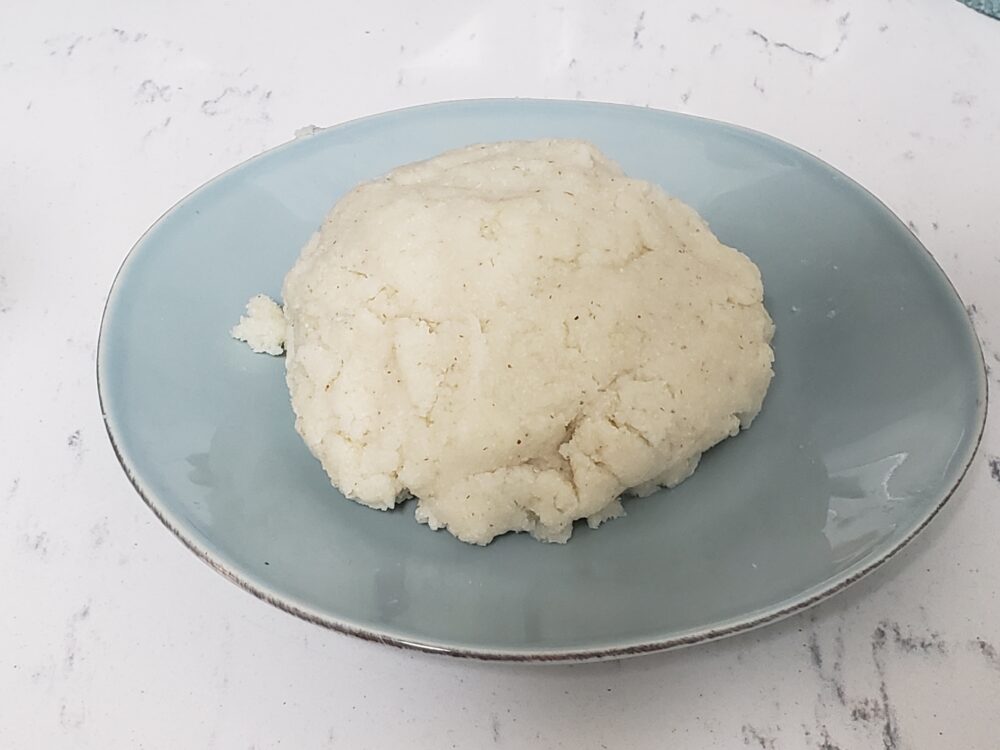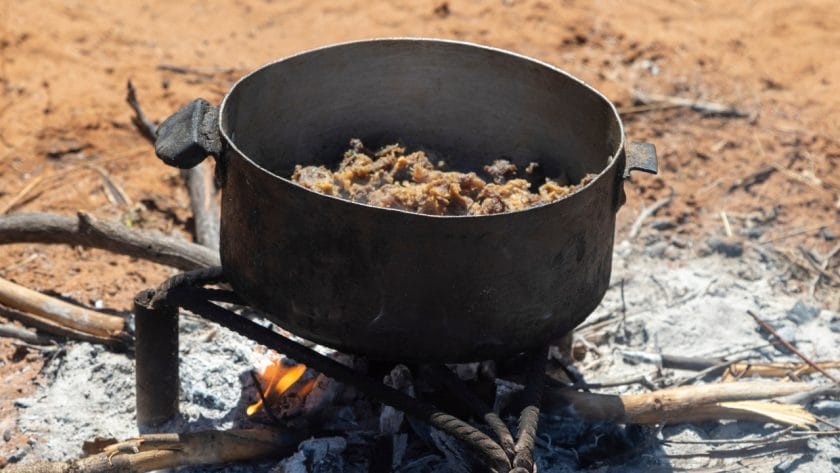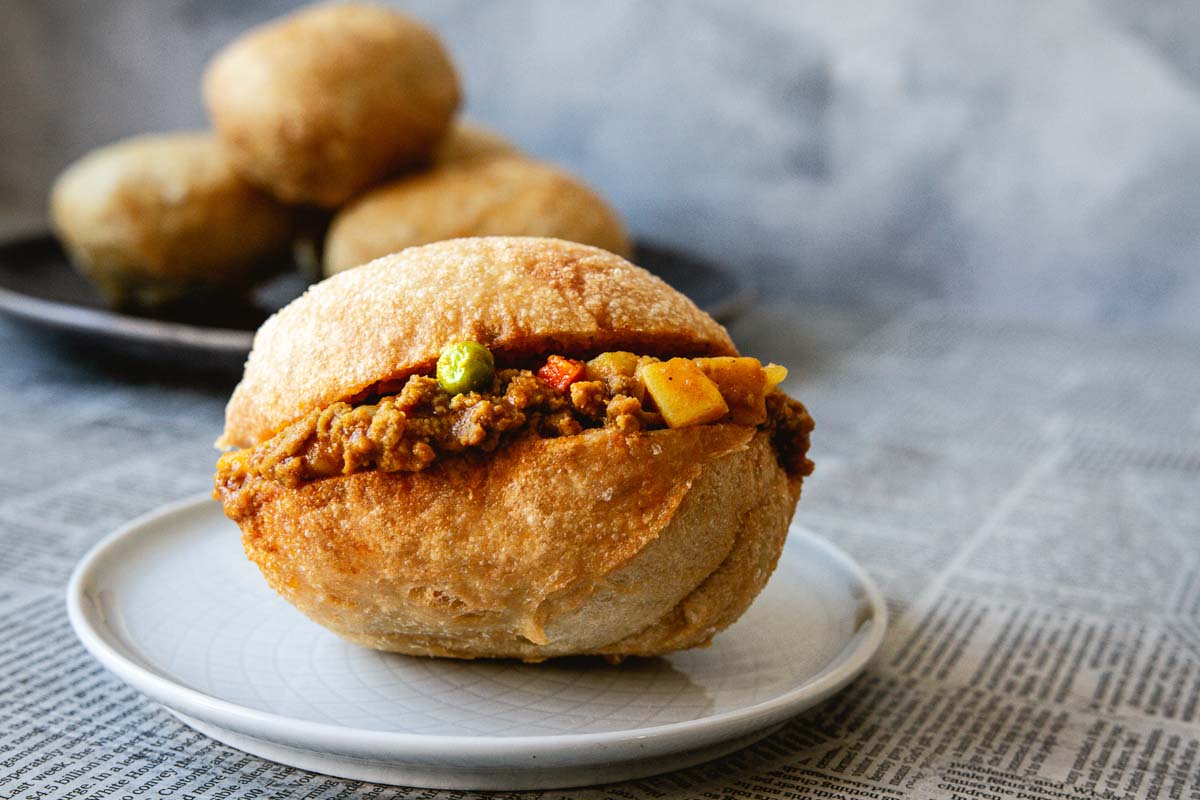Botswana's Culinary Adventure: Must-Try Delicacies

Botswana is known for its rich cultural heritage and diverse culinary traditions. Botswana's local cuisine offers a unique blend of flavours and ingredients that reflects the country's history and geography. From traditional dishes to modern culinary creations, Botswana's culinary scene is sure to capture the hearts and taste buds of food enthusiasts.
Overview of Botswana's culinary scene
Botswana's culinary scene is characterized by a combination of traditional and modern influences. The country boasts a wide range of dishes that showcase the diversity of its culinary traditions. From hearty stews and grilled meats to indigenous vegetables and wild game, there is something to satisfy every palate.
One of the highlights of Botswana's culinary scene is its emphasis on fresh and locally sourced ingredients. The country's fertile soil and abundant wildlife provide a bountiful supply of produce and protein options. This commitment to fresh and sustainable ingredients creates a dining experience that is both flavorful and environmentally conscious.
In recent years, Botswana has also seen the emergence of modern and fusion cuisine. The country's capital, Gaborone, is home to a number of innovative chefs who combine international cooking techniques with local ingredients to create unique and adventurous dishes. This fusion of flavours has put Botswana on the map as a culinary destination for food lovers around the world.
The significance of Botswana's traditional cuisine
Traditional cuisine plays a crucial role in Botswana's cultural identity. The recipes and cooking techniques have been passed down through generations, preserving the country's heritage and traditions. Traditional dishes are not only tasty but also reflect the agricultural practices and lifestyle of the Botswana people.
Some popular traditional dishes include Seswaa, a slow-cooked meat dish often made with beef or goat, and Morogo, a leafy green vegetable that is a staple in Botswana households. These dishes not only provide sustenance but also tell the story of Botswana's history and cultural traditions.
Traditional cuisine also plays a significant role in community gatherings and celebrations. Sharing a meal together is a way to foster unity and strengthen social bonds. Traditional dishes are often prepared and enjoyed during weddings, festivals, and other important events, bringing people together to celebrate and honour their cultural heritage.
Botswana's culinary scene offers a delightful blend of traditional and modern flavours. Whether you are looking for a taste of authentic dishes or innovative fusion cuisine, Botswana is sure to leave you satisfied. Embrace the flavours of this vibrant country and embark on a culinary journey that will not disappoint.

Seswaa
Ingredients and cooking process of Seswaa
Seswaa is a traditional meat dish that holds a special place in Botswana's culinary tradition. It is a simple yet flavorful dish that is loved by locals and visitors alike. The ingredients for Seswaa are relatively straightforward, consisting of meat, salt, and water. The most commonly used meats for Seswaa are beef and goat, but other meats like lamb or chicken can also be used. The cooking process involves slow-cooking the meat until it is tender and easily shredded. This is typically done by simmering the meat in a pot filled with water and salt for several hours. The result is succulent, melt-in-your-mouth meat that is full of rich flavours.
The cultural importance of Seswaa in Botswana
Seswaa not only satisfies the taste buds but also holds cultural significance in Botswana. It is a dish that brings people together and symbolizes unity and togetherness. Seswaa is often prepared and enjoyed during community gatherings, celebrations, and special occasions. It is a staple dish served at weddings, festivals, and other important events as a way to honour Botswana's cultural heritage, traditions, and agricultural practices. Sharing a meal of Seswaa with family and friends fosters a sense of belonging and strengthens social bonds. This dish is a testament to the rich history and cultural identity of Botswana.
So if you find yourself in Botswana, make sure to indulge in a plate of Seswaa and experience the true flavours of this vibrant country. You will not be disappointed by its simplicity and depth of flavours. Whether you are a meat lover or an adventurous food enthusiast, Seswaa is a dish that will captivate your taste buds and leave you wanting more.

Serobe
Ingredients and preparation of Serobe
Serobe is another traditional dish that you must try when visiting Botswana. This dish is made from the intestines and organs of an animal, typically a cow, sheep, or goat. The organs are thoroughly cleaned and cooked until tender. The process of preparing Serobe involves boiling the intestines and organs in water with salt and spices until they are cooked through and soft. This dish is then served with a side of pap, a type of cornmeal porridge, which complements the flavours of the Serobe perfectly.
The historical background of Serobe as a delicacy
Serobe has a long-standing history as a delicacy in Botswana. In the past, when animal resources were scarce, it was necessary for the Batswana people to make the most of every part of the animal they slaughtered for food. Serobe was born out of this resourcefulness, as the intestines and organs were often overlooked by others but valued by the Batswana community. Over time, Serobe has become an important part of Botswana's culinary heritage, representing resilience and the ability to make the most out of limited resources.
As you delve into the rich and diverse cuisine of Botswana, do not miss the opportunity to taste Serobe. It may not be a dish commonly found in other parts of the world, but it is a unique and flavorful experience that will give you a deeper understanding of Botswana's culture and history. So, venture out and try this delightful dish, and let your taste buds be tantalized by the combination of tender intestines and hearty pap.

Vetkoek
Ingredients and cooking method of Vetkoek
When you visit Botswana, be sure to try Vetkoek, another delicious traditional dish that is loved by locals and visitors alike. Vetkoek is a deep-fried bread roll that is crispy on the outside and fluffy on the inside. It is typically made from a simple dough mixture of flour, yeast, salt, and water. The dough is then shaped into balls and deep-fried until golden brown.
Vetkoek can be enjoyed in many different ways. It can be served as a savoury dish, filled with a variety of delicious fillings such as minced meat, cheese, and vegetables. Alternatively, it can also be enjoyed as a sweet treat, dusted with powdered sugar and filled with jam or syrup. The versatility of Vetkoek makes it a popular choice for any meal of the day.
The popularity of Vetkoek in Botswana
Vetkoek is incredibly popular in Botswana, and it is often consumed as a quick and satisfying street food snack. It is loved by people of all ages and is commonly sold by street vendors and at local markets. The warm and comforting taste of Vetkoek makes it a favourite choice among locals, especially during the colder months.
In comparison to Serobe, Vetkoek is a more accessible dish for visitors to try, as it does not involve the consumption of animal organs. Its simplicity and versatility make Vetkoek a beloved dish that is enjoyed by many in Botswana.
So, when you find yourself in Botswana, make sure to indulge in the flavours of Vetkoek. Whether you prefer it savoury or sweet, this traditional dish will leave you satisfied and give you a taste of the vibrant culinary culture of Botswana.

Phutu Pap
Ingredients and traditional preparation of Phutu Pap
When you visit Botswana and want to try another delicious traditional dish, make sure to have Phutu Pap. This staple food is a popular part of the country's culinary culture and is loved by both locals and visitors. Phutu Pap is a type of maize meal porridge that is typically made from white cornmeal, water, and salt.
To prepare Phutu Pap, the white cornmeal is slowly cooked in boiling water while continuously stirring it to prevent lumps from forming. It is important to achieve a smooth and creamy consistency. The porridge is traditionally served hot and can be enjoyed with a variety of dishes, such as stews, curries, or meat dishes. It is also often enjoyed as a simple and comforting breakfast option.
The role of Phutu Pap in Botswana's staple diet
Phutu Pap holds a special place in Botswana's staple diet and is considered an essential component of many meals. It is a filling and nutritious dish that provides energy and sustenance throughout the day. It is particularly popular among rural communities where maize is a common crop.
In comparison to Vetkoek, Phutu Pap may not be as well-known among international visitors, but it is deeply ingrained in Botswana's culinary traditions. It reflects the country's agricultural heritage and the importance of maize in the local diet.
So, when you are in Botswana, don't miss the chance to experience the flavours of Phutu Pap. Whether enjoyed with a hearty stew or as a comforting breakfast, this traditional dish will give you a taste of the rich food culture of Botswana.

Bogobe jwa Lerotse
Ingredients and cooking process of Bogobe jwa Lerotse
When you visit Botswana, be sure to try the delicious traditional dish known as Bogobe jwa Lerotse. This beloved staple food is highly regarded in the country's culinary culture and enjoyed by both locals and visitors alike. Bogobe jwa Lerotse is a type of porridge made from sorghum or millet flour, water, and salt.
To prepare Bogobe jwa Lerotse, the sorghum or millet flour is mixed with water and a pinch of salt, creating a smooth, thick mixture. The mixture is then cooked slowly over low heat, stirring continuously to prevent lumps from forming. The porridge is traditionally served hot and can be paired with various dishes, such as meat, vegetables, or soups.
The cultural significance of Bogobe jwa Lerotse in traditional Botswana meals
Bogobe jwa Lerotse holds great cultural significance in Botswana's traditional meals, playing a central role in the country's culinary traditions. It is considered a comfort food that brings people together and is often enjoyed during social gatherings and family meals. The use of sorghum or millet flour reflects the reliance on locally grown crops and the resourcefulness of the Batswana people.
In comparison to other traditional dishes like Phutu Pap, Bogobe jwa Lerotse may not be as widely known among international visitors, but it is deeply rooted in Botswana's food culture. Its delicious taste and nourishing qualities have made it a favourite among many generations.
So, when you visit Botswana, do not miss the opportunity to savour the flavours of Bogobe jwa Lerotse. Whether enjoyed with a hearty stew or as a comforting meal on its own, this traditional dish will give you a true taste of Botswana's rich culinary heritage.

Magwinya
Ingredients and frying technique of Magwinya
If you're looking to indulge in another tasty Botswana treat, try Magwinya, a popular street food loved by locals and visitors alike. These deep-fried dough balls are incredibly delicious and can be enjoyed as a snack or as part of a meal. The ingredients for Magwinya are simple and easily accessible, consisting of flour, sugar, yeast, salt, water, and oil for frying.
To make Magwinya, the dough is prepared by mixing the flour, sugar, yeast, salt, and water together. The mixture is then left to rise for a period of time, allowing the yeast to work its magic and create soft and fluffy dough. Once the dough has risen, small portions are formed into balls and deep-fried in hot oil until they turn golden brown. The frying process gives Magwinya a crispy exterior while keeping the inside light and airy.
The origin and widespread consumption of Magwinya in Botswana
Magwinya is believed to have originated from South Africa, but it has become a beloved staple in Botswana's street food scene. Found in numerous roadside stalls and food markets across the country, Magwinya is a favourite snack for many Batswana. Its popularity can be attributed to its delicious taste, affordability, and portability.
In comparison to Bogobe jwa Lerotse, Magwinya is more widely known among international visitors due to its accessibility and resemblance to popular fried dough dishes found in other cuisines. However, it still holds a special place in Botswana's culinary heritage, often enjoyed during social gatherings, picnics, or as a quick and satisfying snack.
So, when you find yourself in Botswana, make sure to try Magwinya. Bite into the crispy exterior and savour the fluffy goodness inside. This delectable treat is a testament to Botswana's vibrant food culture and its ability to create mouthwatering dishes that bring people together.

Ting
Ingredients and brewing process of Ting
Ting is made from a combination of sorghum, maize, and millet, which are all staple crops in Botswana. These ingredients are ground into a fine powder and mixed with water to form a thick paste. The paste is then left to ferment for several days, allowing natural yeasts to convert the sugars into alcohol. After fermentation, the resulting liquid is strained and served chilled.
The traditional use of Ting in Botswana's beverages
Ting is not only enjoyed on its own, but it is also a key ingredient in many traditional Botswana beverages. It is often combined with fruit juices or sweeteners to create refreshing and flavorful concoctions. Traditional celebrations and gatherings in Botswana often feature ting as a staple beverage, served in large communal bowls for everyone to enjoy.
In comparison to other popular beverages in Botswana, such as ginger beer or homemade fruit juices, ting stands out for its unique flavour and cultural significance. Its use of traditional ingredients and brewing process showcases Botswana's rich culinary heritage and the importance of community in sharing and enjoying food and drinks together.
So, when you visit Botswana, don't forget to sample a glass of Ting. Take a sip and experience the traditional flavours that have been enjoyed by generations. Whether you enjoy it on its own or as part of a mixed drink, Ting is sure to quench your thirst and transport you to the vibrant and flavorful world of Botswana's culinary traditions.

Recommendations for trying Botswana's delicacies
When you travel to Botswana, make sure to fully immerse yourself in the local food and drink scene. Here are some recommendations for trying Botswana's delicacies:
-
Sample Ting: As mentioned earlier, Ting is a must-try beverage in Botswana. Seek out local restaurants or markets where you can find this traditional drink and experience its unique flavours.
-
Try the local cuisine: Botswana offers a variety of delicious dishes, such as Seswaa (slow-cooked beef or goat meat), Morogo (wild spinach), and Vetkoek (deep-fried dough). Explore the local restaurants and street food stalls to savour these authentic flavours.
-
Don't miss the braai: In Botswana, a braai (barbecue) is a social gathering centred around grilled meat. Join in on a traditional braai experience to enjoy the mouthwatering flavours of grilled meats and the lively atmosphere.
-
Visit local markets: Botswana's markets are a treasure trove of local produce, spices, and snacks. Explore the vibrant stalls, interact with the friendly vendors, and try some of the unique snacks and street food offerings.
-
Engage with locals: The best way to truly experience Botswana's culinary traditions is by engaging with the locals. Strike up conversations, ask for recommendations, and join in on local celebrations or cooking classes to learn more about the cultural significance of the food and drink.
By following these recommendations, you'll be able to fully immerse yourself in Botswana's culinary scene and discover the delicious flavours that this beautiful country has to offer. Enjoy your gastronomic adventure in Botswana!
